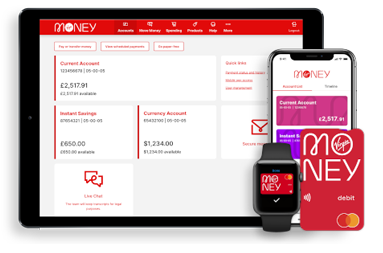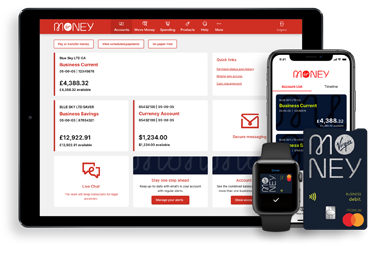-
Login
More Login links
Internet Banking
Business Internet Banking
Started an application?
Other services
Help
-
Register
More Register links
Internet Banking
Business Internet Banking
Other Services
- Our Products More business product links
Bank accounts
- Business current account
- Business choice account
- Switching business accounts
- Compare all business accounts
Savings accounts
Loans and Finance
- All Treasury solutions
Treasury solutions
Help and support
- Online Banking More online banking links
BusinessOnline
- Commercial More commercial business links
Business enquiries
Contact us about a general enquiry.
- Corporate and Structured Finance More corporate business links
Corporate and Structured Finance
SME Cashflow Finance
Unlock your cash flow potential. At Yorkshire Bank we take a flexible approach to business borrowing.
Lending is subject to status and eligibility.
- Our Sector Expertise More sector expertise links
Ways to help increase profits | Yorkshire Bank
< back to all business news articles
24/10/2017
Successful small business owners are those who are continually seeking ways to increase their profits. For many small businesses, their initial first thought is to increase revenue.

However, it’s often small incremental changes across a number of business areas that creates notable improvements to the financial bottom line. Here are four processes you can implement, without needing to increase sales, to help boost your profits.
Increase prices regularly
It might sound obvious to some, but you should schedule regular price reviews. Small incremental increases are easier for customers to accept. Even a small price increase (think 1-5%) can raise your profits by a significant amount. It’s small enough not to cause too much disruption, but if it’s every product and service then the volume could be enough to show significant gain.
If you make pricing increases part of your business processes, rather than on an ad hoc basis during the year, it's easier to justify potential price increases to customers. Of course if the increase is small enough, you may not even need to explain it.
Check gross profit
Gross profit is a key factor in your business and there are several ways you can try to improve it. Develop systems that:
- Lower the cost of goods sold (COGS) by either using more affordable materials that don’t affect the end result (unbranded standard materials compared to branded). You can also try to re-negotiate deals with suppliers, which can reduce your costs and streamline your delivery procedures.
- Reduce waste. Conduct an exercise to spot any areas where there is excess waste, and then devise ways to minimise.
- Consider increasing your marketing efforts for premium or higher margin products and learn the art of up-selling and cross-selling to potentially increase your average profit per sale.
- See if a low-profit product might bring other business from a major, highly profitable customer.
Conduct a regular product review
Take a look at each of your individual products and think of ways to maximise their profits. You can increase their prices, bundle them with other products to create attractive packages, eliminate those that aren’t selling, promote the ones that are and think of new products or services you could add to the mix.
You could also research new products and services that might attract a new type of customer. Proper analysis of your sales data means that you can look at what your customers are buying and then think of other products or services that could be sold along with them.
- Conduct a stock take. Eliminate products that aren’t selling well – you can achieve this by having a sale to get rid of them, which will bring more cash into the business.
- Identify the products that are selling well and invest more in marketing them. Then try and come with new products that might compliment those that are already popular and as mentioned above, bundle them together in packages.
- Stock premium versions of an existing product. You might be surprised by how much extra people will pay for items that are marketed as premium. Identify any new products or services that you could add on, that you currently don’t stock or provide.
Develop systems that become more efficient
Spotting ways to increase efficiency means reviewing all your systems and look for ways they can be improved. The better the system, the more efficient and productive your business can be. Take a look at your customer base. Do you have habitually late or non-paying customers? It's important to:
- Regularly review your debtors. Chase up outstanding debts and tighten up your credit processes so you’re less likely to risk offering credit to risky customers.
- Make sure you’re always paid on time. If your customers owe you money, you need to implement fast and effective collection techniques. Ideally, you want to reduce the chance of bad debts and pressure on your business’s cash flow.
- Frequently check cash flow forecasts, streamline your accounting using good software and implement clear payment terms and a robust payments process. Make sure the processes are managed properly, with good documentation and templates for common processes like invoicing.
- Regularly monitor your progress over time to ensure you’re still on the right track. Keep an eye on your key indicators and track them regularly. These don’t always have to be financial measures. You may decide that a measure of success is the number of phone calls you make, the number of people that come into your business, or a reduction in complaints. Match your progress to internal benchmarks relative to your industry.
- Make the most of technology to streamline processes and become more efficient. For instance, you can make use of Skype for meetings instead of spending money travelling to meetings, online subscriptions and external contractors to reduce full time employee costs.
Summary
Strong, robust systems that you monitor regularly are a key factor in increasing your profits. The sooner you implement them, the quicker you'll see improvement in your profit margins. It's wise to seek advice when it comes to your business systems, so talk to your accountant about how you can streamline your financial processes.
POSTED IN: Insurance,Debt Management,2017,Growth
SHARE
Related Articles
You are here: Business Banking > Business News > Articles
- About Yorkshire Bank
- About us
- Virgin Money UK PLC
- Media relations
- Careers
- Modern Slavery Statement

Internet Banking has moved
To log into Internet Banking you now need to use Virgin Money Internet Banking. You'll get the same great service and are able to access all your accounts.
Your log in details will stay the same and you can log in directly from the shiny new Virgin Money website.
Continue to Virgin Money Internet Banking
Go to the Virgin Money website
Be Alert
Never tell anyone a token 3 response code, even someone from the bank. You should only input these codes to our secure Business Internet Banking service when you’re sending and making payments. If anyone calls and asks for a token 3 response code or asks you to authorise a payment on the App for fraud checks, hang up and call us on 0800 085 2914 from another line if possible, remember the Bank will never ask you to disclose your security details.
Continue to Virgin Money Business Internet BankingYou can find impartial information and guidance on money matters on the “MoneyHelper” website.
Yorkshire Bank is covered by the Financial Services Compensation Scheme (FSCS), Find out more.
